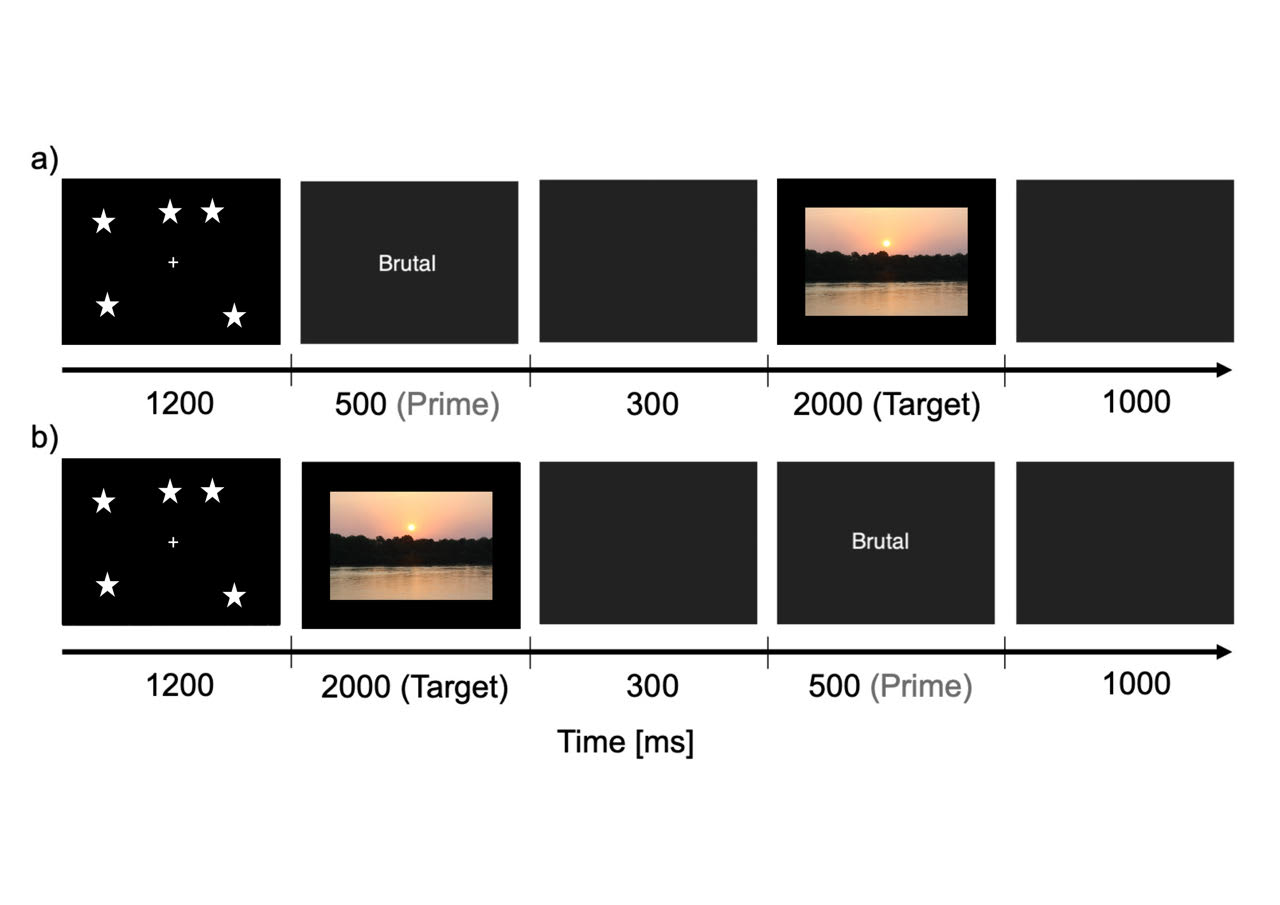EEG in combination with machine learning (artificial neural networks) will be used in a (backward and forward) behavioral priming study to investigate emotional psi effects at the individual and group level.
In affective priming, the perception of an emotional “prime stimulus” influences the reaction time to the subsequent emotional “target stimulus”. If priming and target have the same valence (congruent trials), the reactions to the target are faster than if priming and target have different valences (incongruent trials). In 2011, Bem introduced a backward priming paradigm in which the target was presented first and the prime only after the response. Similar to the classic forward affective priming effects, he found faster reaction times on congruent compared to incongruent trials and interpreted these results as evidence for precognition (a psi effect). In our EEG study, we examine both, a forward priming paradigm and a backward priming paradigm (Fig. 1). We analyze the EEG data at the group level (ERPs; event-related potentials) and at the individual level (individual participants, using artificial neural networks).

